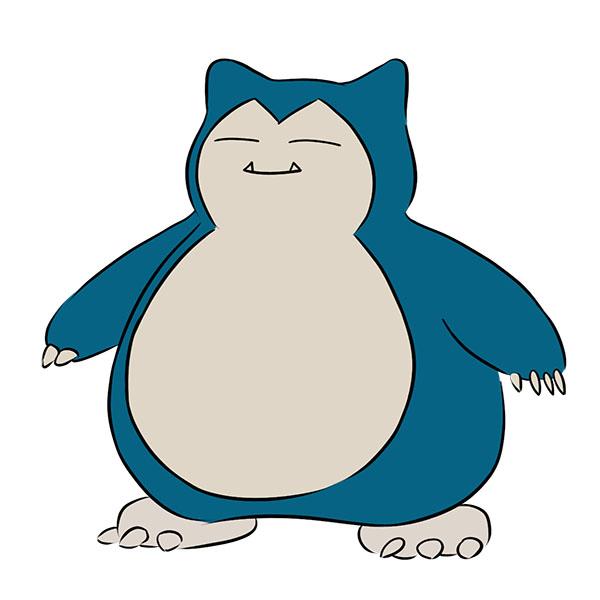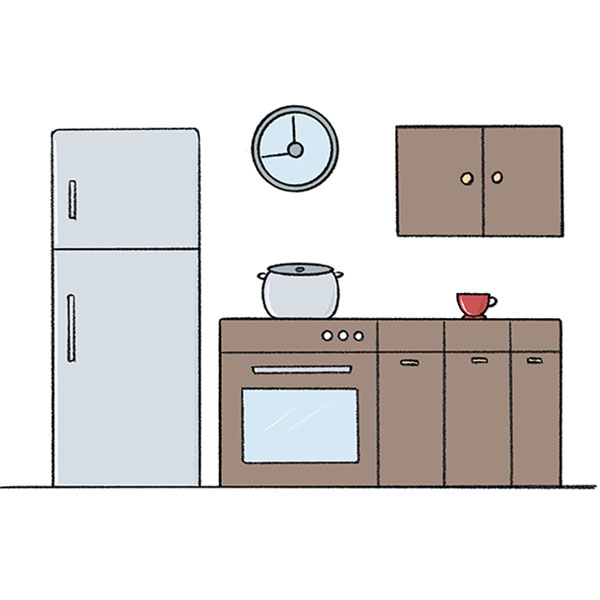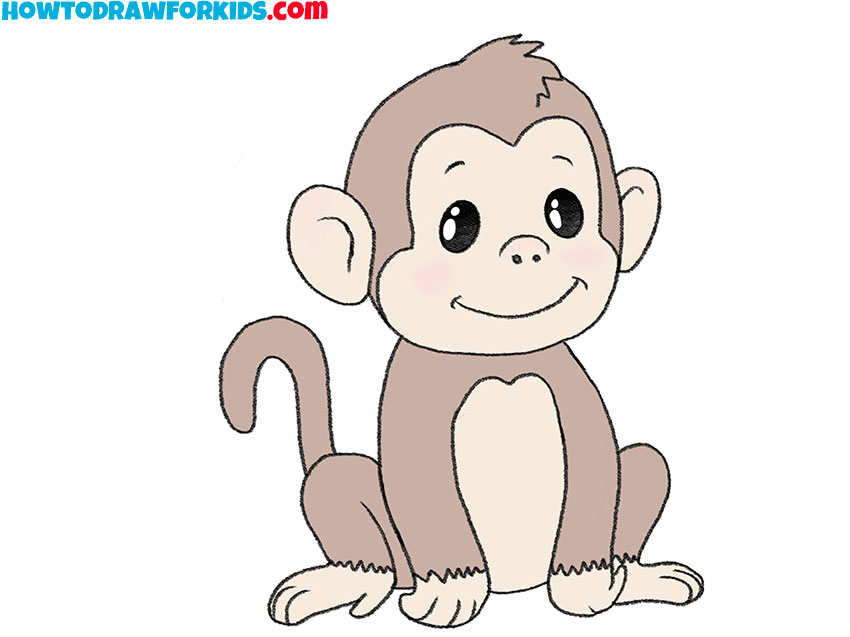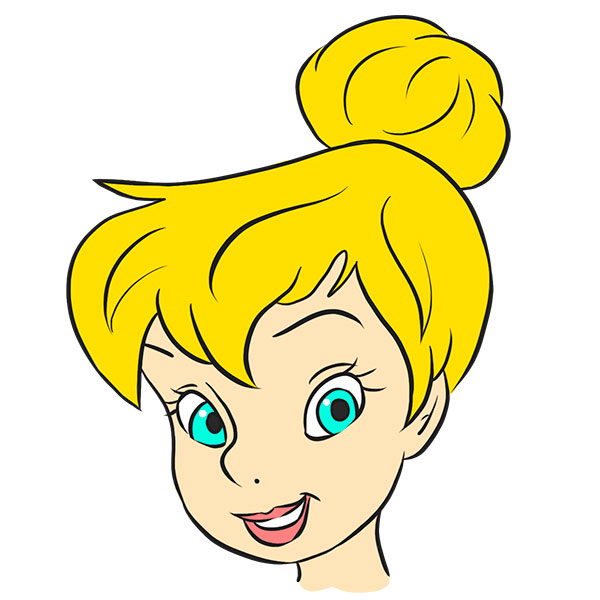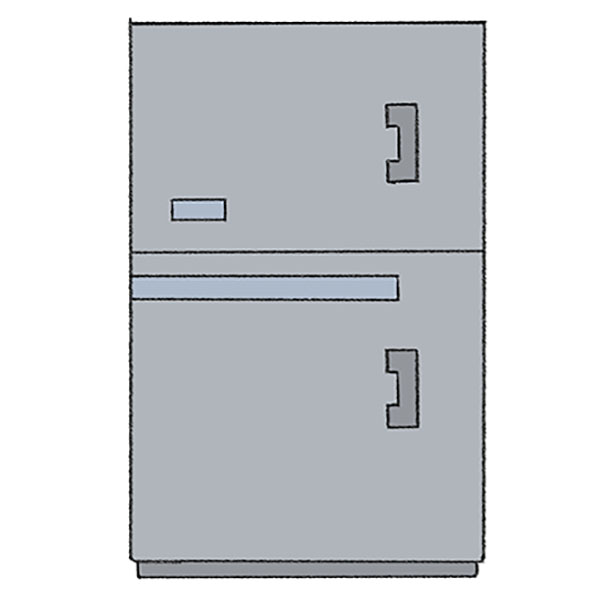How to Draw Ghost Rider
Capturing the fiery essence of Ghost Rider in a form that’s endearing and fun is the heart of this drawing tutorial. With my method, I’ve tailored the experience to ensure you learn how to draw Ghost Rider in a style that’s both unique and accessible. Each step is designed to build your confidence as you bring this iconic figure to the page.
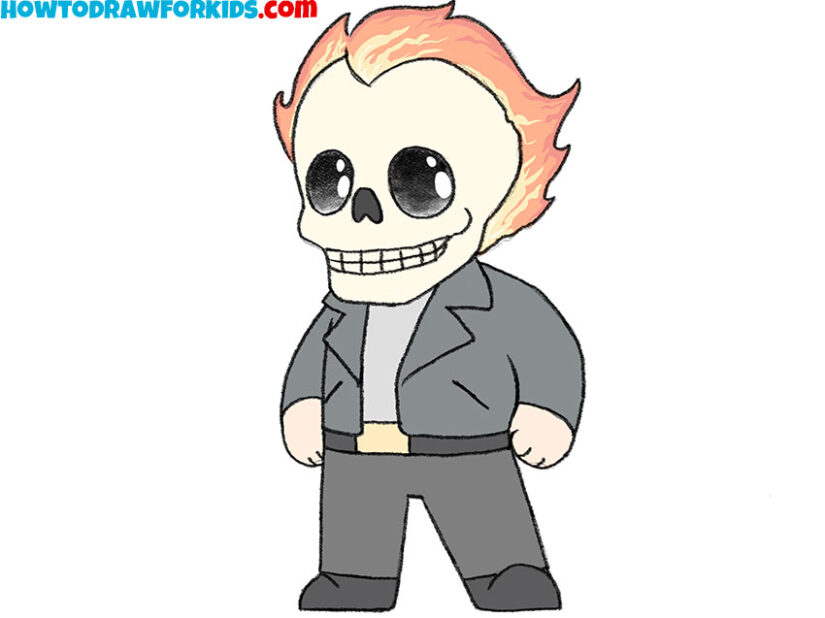
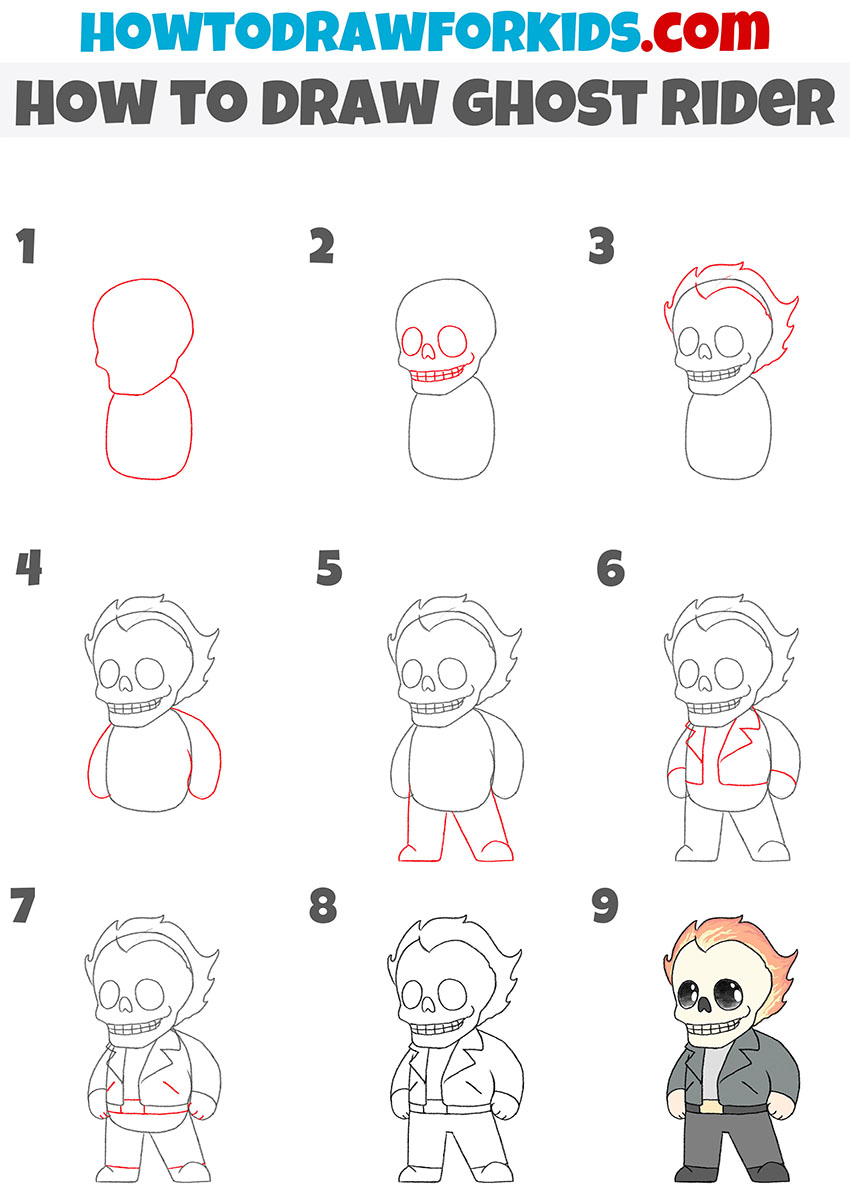
How to Draw Ghost Rider: Basic Information
Welcome to this creative venture where I’ll teach you how to draw Ghost Rider with a twist. Unlike his typically fierce portrayal, this lesson brings a playful charm to the character. My method simplifies the process, inviting artists of all ages to capture the essence of this fiery spirit in a fun, accessible way.
In this rendition of Ghost Rider, we forgo the fearsome for the friendly, adopting a chibi-style that’s both adorable and approachable. The flames, while still a nod to his infernal origins, are drawn with whimsy rather than warning. It’s a fresh take that maintains his spirit without the intensity.
As we progress to draw Ghost Rider, each stroke and line will be imbued with a sense of ease and playfulness. My aim is for you to enjoy every moment of the drawing process, creating a Ghost Rider that’s as endearing as he is emblematic. Grab your pencils, and let’s bring this miniature marvel to life.
Ghost Rider Drawing Tutorial
Materials
- Pencil
- Paper
- Eraser
- Coloring supplies
Time needed: 25 minutes
How to Draw Ghost Rider
- Sketch Ghost Rider’s head and body.
Begin your drawing by creating an oval shape for the skull, with the lower portion slightly narrower to form the jawline. Below the oval, attach a smaller, curved shape to represent the torso.
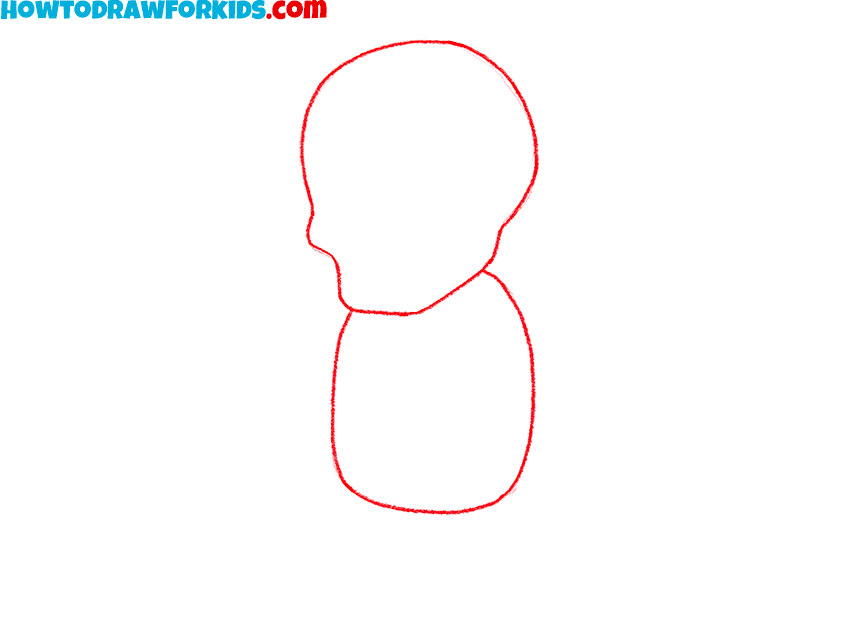
- Sketch the skull details.
Within the oval, draw two large, hollow circles for the skull eye sockets. Below, sketch a wide, curved line for the mouth and add vertical lines for the teeth, creating a skeletal grin.

- Create Ghost Rider’s flame.
Around the skull, add jagged lines to represent flames licking the sides and top of the head, giving an impression of the head being ablaze.
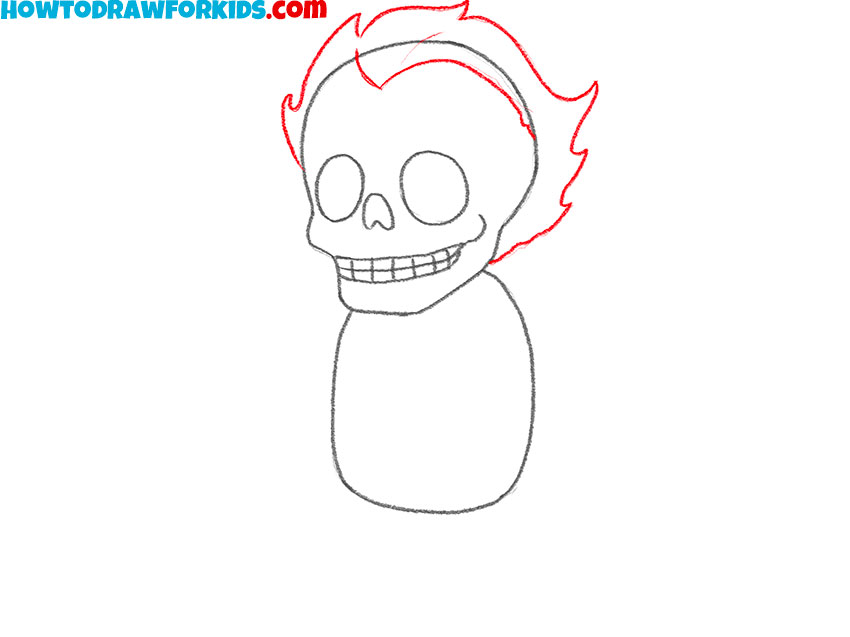
- Add the arms.
The hands should be proportional to the torso, ensuring a heroic stance. Keep the lines smooth as these are still the basic shapes that will be refined later.

- Sketch the legs.
Wide, strong legs depict a determined superhero pose. Draw the legs using wide rectangles that end in rounded shapes. The rounded shapes are feet that look slightly different due to the angle.
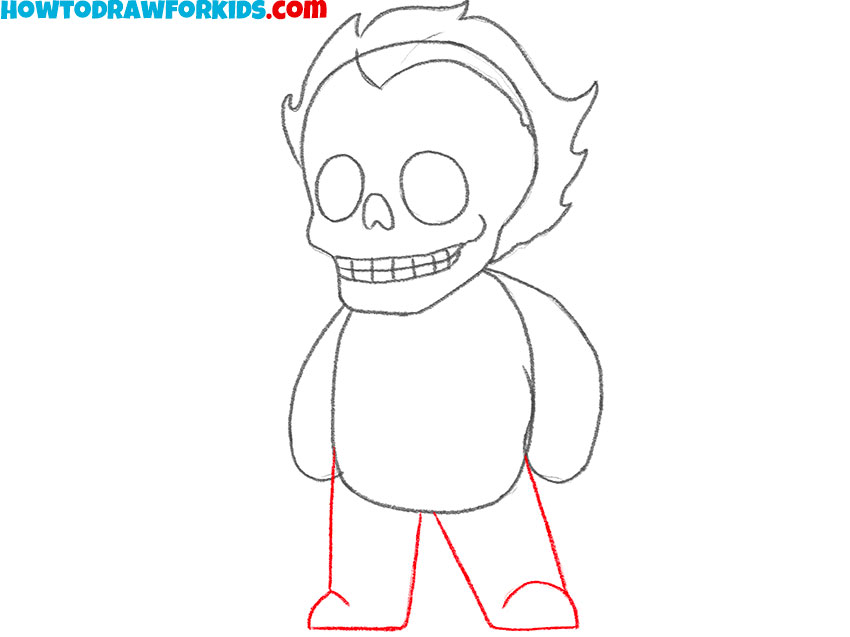
- Define the costume.
Outline the jacket with smooth lines that follow the contours of the body. Draw the outline of the collar in the form of two large angles on each side. Add horizontal lines on the arms to represent the sleeves.

- Detail the Ghost Rider’s clothes.
Add more detail to the jacket, drawing the lapels and the edges of the jacket opening. Include diagonal lines for the pockets and vertical lines for the folds, which give the clothes a realistic texture.
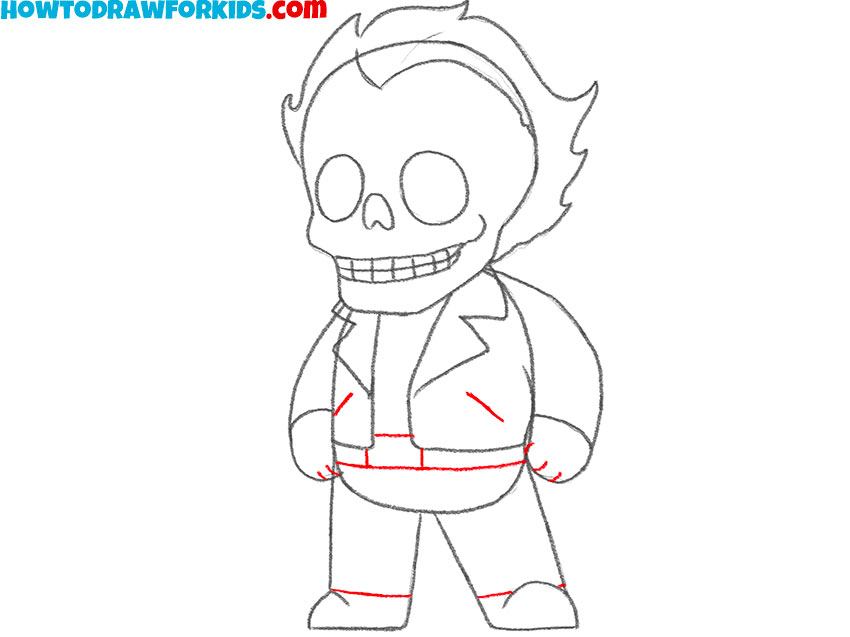
- Clean up the Ghost Rider drawing.
Refine the entire figure by erasing any unnecessary guide lines from the initial steps, leaving a clean outline of Ghost Rider. This step transforms the draft into a final character.
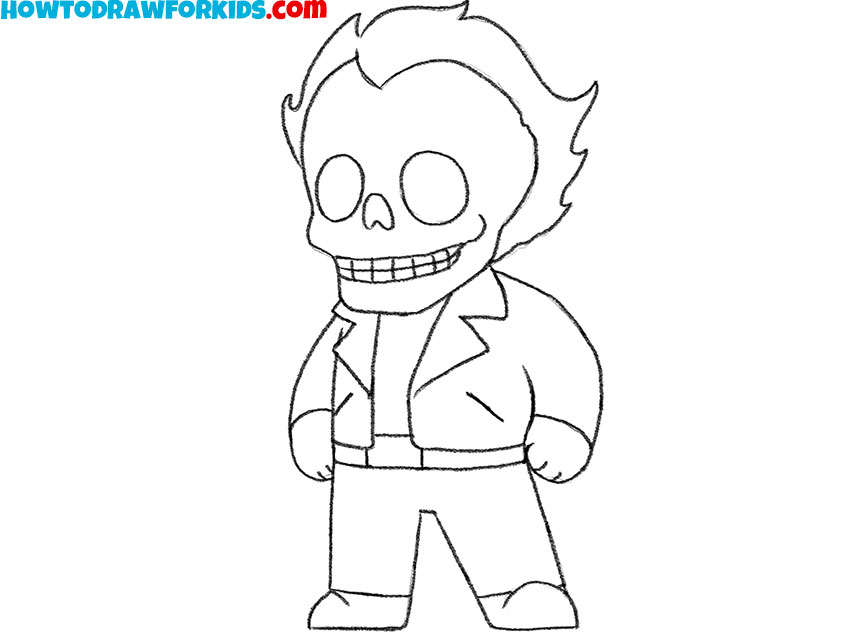
- Color the Ghost Rider.
Color the flames around the head in shades of orange, yellow, and red to reflect the fiery nature of Ghost Rider. Use black for the jacket and pants, with silver or grey for the zipper and belt details.
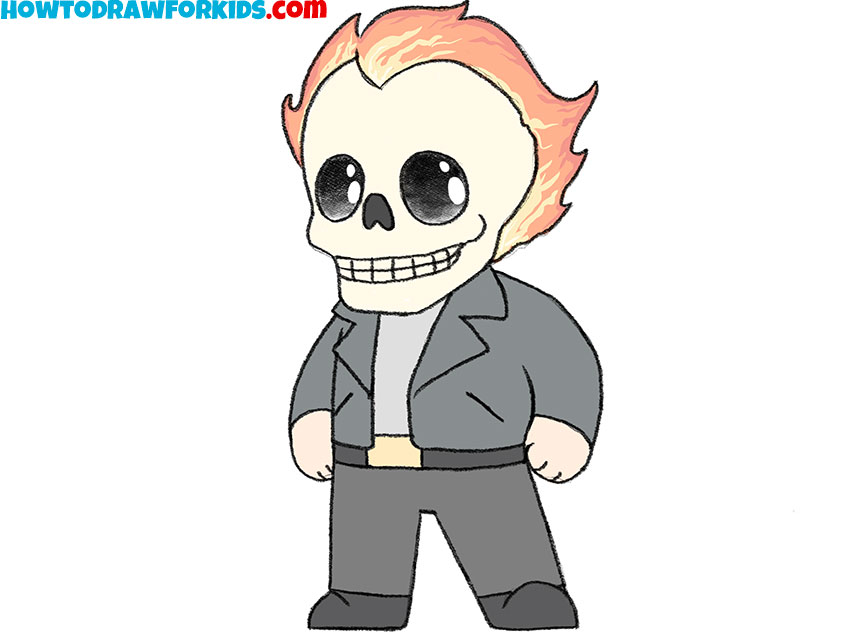
Additional Content
So, I’ve created a complimentary PDF guide to accompany our Ghost Rider tutorial. Designed as a succinct version of the lesson, this guide is downloadable and perfectly formatted for use offline. It’s an essential resource for artists who prefer to practice without reliance on internet access, allowing for artistic growth in any setting.
This PDF encapsulates the essential techniques for drawing Ghost Rider, making it an invaluable tool for both beginners and experienced artists alike. By breaking down the drawing process into manageable segments, this guide ensures that you can approach your artwork with confidence and clarity, anytime and anywhere.
I encourage you to take advantage of this downloadable guide to enhance your drawing skills. With this PDF, you have the freedom to practice and perfect your art, ensuring that every line and detail contributes to a stunning representation of Ghost Rider.
How to Draw Ghost Rider: Video Tutorial
Advanced Techniques for Drawing Ghost Rider
As we conclude our adventure with Ghost Rider, it’s crucial to reflect on the journey and look forward to the paths yet to be explored. Below are several strategies to further enhance your drawing skills, each designed to push your creative boundaries and deepen your artistic expertise.
- Experiment with Textures: Ghost Rider’s flaming skull and leather jacket offer a perfect opportunity to practice different textures. Try using various pencil pressures and strokes to mimic the roughness of leather and the ethereal quality of fire.
- Play with Lighting: The dramatic contrast between the dark of Ghost Rider’s attire and the bright flames can teach you a lot about playing with light and shadow. Experiment with different lighting scenarios to see how they affect mood and depth.
- Incorporate Backgrounds: Challenge yourself by placing Ghost Rider in different environments. Whether it’s a desolate cityscape or a hellish inferno, backgrounds can add context and enhance the storytelling of your piece.
- Study Proportions and Anatomy: While our focus was on a stylized version of Ghost Rider, understanding the basics of human anatomy and proportion can add realism and weight to your drawings. Even a character as fantastical as Ghost Rider benefits from anatomical accuracy.
- Draw from Different Angles: To truly master the form of Ghost Rider, practice drawing him from various perspectives. This not only improves your spatial understanding but also makes your depiction more dynamic.
In embracing these strategies, you invite growth and refinement into your artistic practice. Each point not only serves to Improve your drawing but also deepens your connection with the creative process, allowing you to explore the boundless possibilities within the realm of art.
Ghost Rider Drawing FAQs Unveiled
Embarking on the journey of drawing Ghost Rider, numerous questions may arise, sparking the desire for deeper understanding. To address this, I’ve compiled a selection of frequently asked questions encountered throughout this lesson. These inquiries not only reflect common challenges but also highlight key learning moments.
- How do I get the flames to look realistic? Practice layering different shades of yellow, orange, and red. Use light strokes to blend these colors, creating a gradient that mimics the natural flow of fire.
- Can I draw Ghost Rider in different poses? Absolutely! Understanding basic human anatomy will help you pose Ghost Rider in various dynamic positions. Start with simple skeletons to get the pose right before adding details.
- How can I improve my drawing skills? Regular practice is key. Also, study from real life and other artworks, and don’t shy away from using reference materials to understand complex shapes and shadows.
Remember that each question you ask is a step towards deeper understanding and skill. Whether it’s mastering the flicker of Ghost Rider’s flames or capturing his stoic demeanor, your artistic path is uniquely yours to explore. Carry these FAQs with you as a beacon, illuminating the way to your next creative conquest.
Conclusion
Concluding our journey through the flames with Ghost Rider, I invite you to continue exploring the vast landscape of creativity on my website. From the introspective challenge of drawing a self-portrait to the explosive dynamics of a volcano, there’s a lesson for every curiosity.
To ensure you’re always in the loop with fresh tutorials and artistic insights, follow my social media channels. Your engagement fuels our creative community, so don’t hesitate to leave comments with your thoughts or requests for future lessons. Together, we’ll keep the fire of creativity burning bright.

